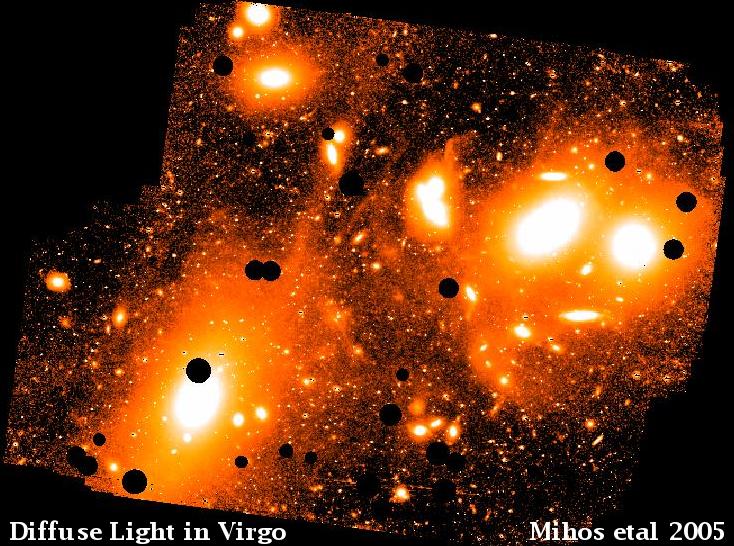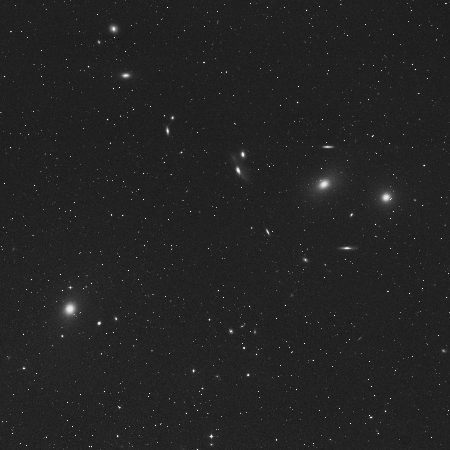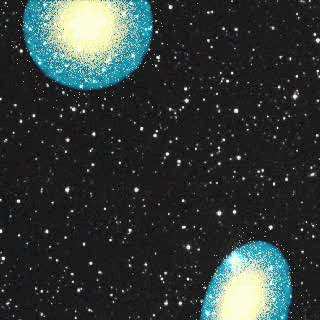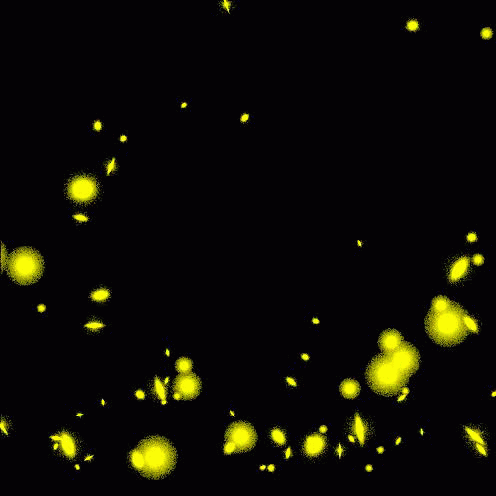Over
the course of two months in March and April 2004, on clear moonless
nights, we took a series of seventy two 15-minute exposures of the
Virgo Cluster with the Burrell Schmidt (and twice as many calibration
images).
The images were then combined to make a composite wide-field image,
with the exquisite sensitivity needed to detect the very faint
intracluster light -- light that is nearly 1000x fainter than the dark
night sky itself.
The image to the right shows the Virgo Cluster in its true glory,
revealing the complex, diffuse web of starlight that fills the space
between the galaxies in the cluster. Many long streamers of stars can
be seen, along with very faint extended halos surrounding the bright
galaxies, and several groups of galaxies embedded in faint "common
envelopes" of light.
This diffuse intracluster light, formed from the repeated collisions of
galaxies within the cluster, represents an archaeological "history" of
the formation and evolution of the Virgo Cluster.
(We also have available an mpeg movie showing
light at progressively fainter and fainter levels in the Virgo
Cluster.)
|

The deep, wide-field image of
the Virgo Cluster, revealing its complex web of diffuse
intracluster light. The dark
circles are areas where bright foreground stars in our own galaxy
have been masked out of the
image. (Click on the image for a larger version.)
|




